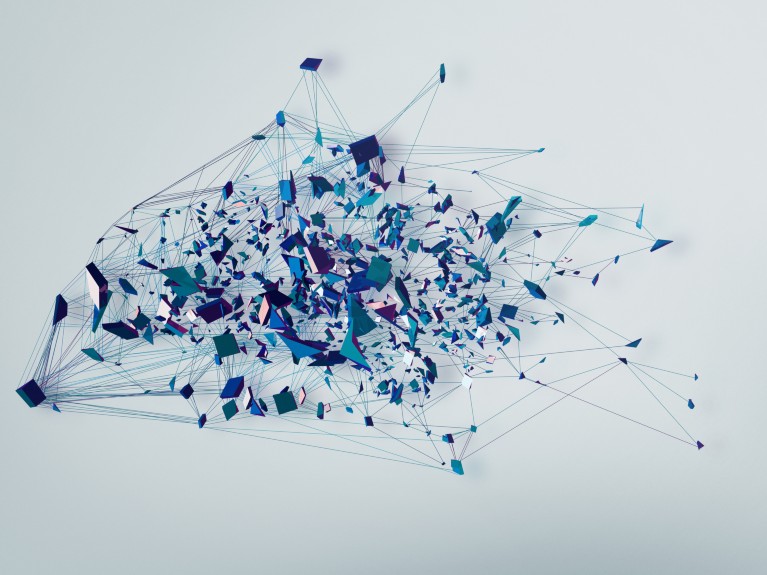
Credit: Mina De La O/ Stone/ Getty Images.
Innovation is key to economic growth, but what drives it and how it can be nurtured is elusive. Now a group of Italian scientists has used network theory, a branch of mathematics that studies complex relations between a large number of objects, to study how social interactions influence an innovator’s creativity. In a study published in Physical Review Letters, the researchers suggest that the pace of discovery of individual innovators depends on their position in a network of other creative individuals, and on the structure of that social network itself.
The study builds on the concept of adjacent possible, introduced in the 1990s by complex system researcher, Stuart Kauffman. He suggested that biological and social systems evolve in small steps by exploring things that are 'one step away from what is already known’, and that each exploratory step opens new possibilities and closes other ones. The concept can easily be adapted to culture and innovation. Consider for example the discovery of new artists on a music streaming platform. One would begin by searching, say, Lou Reed. After listening to Perfect Day one could be prompted to dive into his discography, or branch out to Duran Duran, who covered Perfect Day years later. Each choice would affect the possibilities for further explorations and discoveries.
A few years ago, Vittorio Loreto, a professor at Università di Roma La Sapienza and a co-author of this study, combined the ‘adjacent possible’ model with the ‘Pólya urn’ statistical model, where objects or concepts are represented as coloured balls inside a bag. Each time a ball is pulled from the bag, a certain number of balls of the same colour are put back inside. Loreto introduced a ‘innovation triggering’ variation to the model, where new balls with new colours are also added in the bag each time1. The number of balls in the bag grows both by a process of reinforcement, as in traditional Pólya’s urns, and by innovation. This model, formalized analytically and by computer simulations, accounts for the power of each discovery to extend one’s adjacent possible, and correctly predicts some statistical patterns that are observed in the study of innovation.
This new study, led by Iacopo Iacopini, expands the model to include the power of social networks as an accelerant of discoveries2. “We wanted to understand how the architecture of a complex system influences its properties” says Vito Latora, professor at Università di Catania and last author of the study.
The researchers took Loreto’s urns and connected them in networks they called 'urnets’, based on data from real-world social structures such as collaboration networks between musicians, co-authorship networks between researchers, and the Zachary Karate Club — a university sports club that was studied in detail in the early 1970s, and has since become a textbook case-study for social scientists and, increasingly, for network scientists. The researchers ran computer simulations of their model to make predictions on the emergence and circulation of new ideas, and found that they were consistent with data from the real social networks. In particular, they showed that a central position in a network grants a higher discovery rate.
Iacopini says the most immediate practical application would be in recommendation systems, for example for streaming video or music services. Recommendation algorithms need to balance between suggesting things you may like, but are entirely far from your previous tastes, and things which you could enjoy based on your previous consumption but in fact have no appeal for you. Some of the algorithms used by streaming services take into account the tastes of each user’s close contacts, but could be much more sophisticated.The next phase in the study aims to explore how innovation moves through a network, and of particular interest to tech-industry employers, what group structure fosters the best discovery rate across its members.
